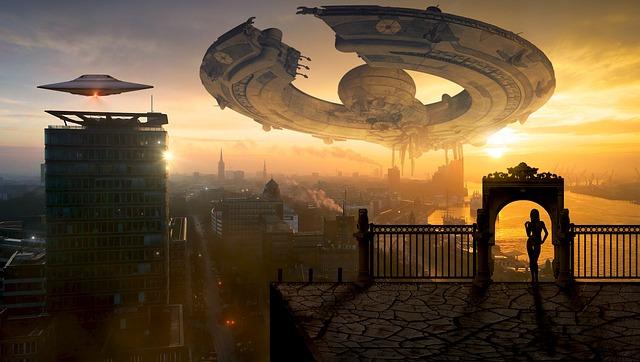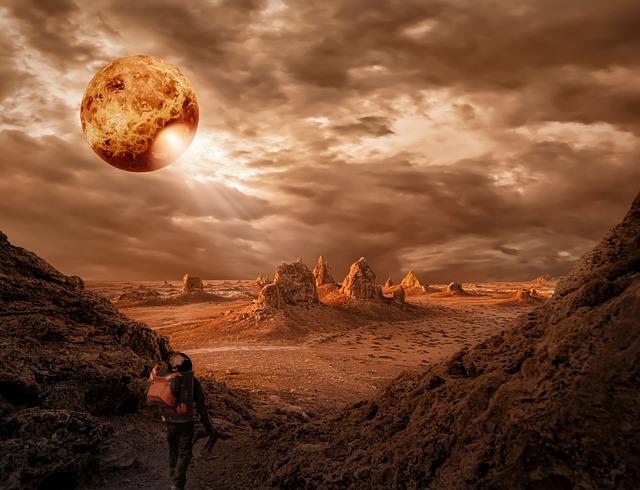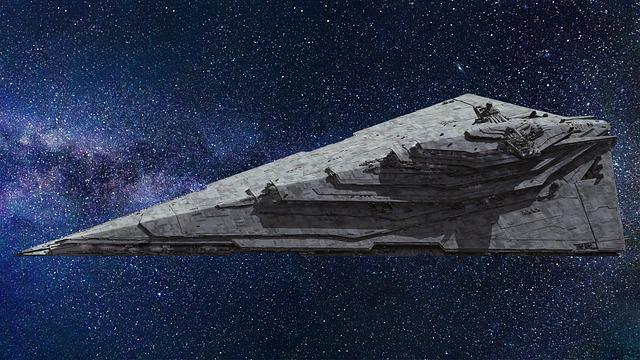In a galaxy not so far away, the mesmerizing starships of CGI“>Star Wars have captivated audiences for decades, zipping across the cosmos with an allure that bridges fantasy and reality. But behind the dazzling dogfights and epic space battles lies a fascinating fusion of artistry and technology. From the tactile charm of meticulously crafted miniatures to the groundbreaking wizardry of CGI, the creation of these iconic vessels is a testament to the innovation and imagination that define the Star Wars saga. Join us as we embark on a journey through the creative process that brought these legendary ships to life, exploring the intricate dance between practical effects and digital magic that continues to inspire generations.
Crafting Galactic Icons: The Art of Miniature Spaceships
In the mesmerizing universe of Star Wars, the creation of its iconic spaceships was a brilliant fusion of miniature models and cutting-edge CGI. These galactic vessels, etched into the minds of fans worldwide, were crafted with meticulous attention to detail. Skilled artists and model makers built intricate miniatures, allowing filmmakers to capture the essence of space battles with a tangible realism that CGI alone couldn’t replicate.
- Miniature Models: Crafted by hand, these small-scale replicas provided a physicality that enhanced the visual storytelling.
- Innovative CGI: As technology advanced, CGI was seamlessly integrated, adding dynamic movement and complex details to the scenes.
- Hybrid Techniques: By combining both methods, filmmakers achieved a balance that brought the Star Wars galaxy to life with unparalleled authenticity.
This blend of artistry and technology not only revolutionized visual effects but also set a benchmark in cinematic history, proving that the synergy of old and new techniques can create truly timeless icons.
From Model to Screen: Bridging Practical Effects with CGI
In the galaxy of filmmaking, the journey from conceptual model to the cinematic screen involves a delicate dance between practical effects and CGI. The iconic spaceships of Star Wars are a testament to this blend of artistry and technology. Initially, intricate miniatures were meticulously crafted, capturing the imagination with their detailed designs. These physical models provided a tangible realism, allowing filmmakers to experiment with lighting and camera angles in ways that computer-generated imagery couldn’t replicate at the time.
As technology advanced, CGI emerged as a powerful tool to enhance these practical effects. The transition from physical models to digital screens involved several key steps:
- Digitization of Miniatures: Scanning and recreating the miniatures digitally to maintain their authenticity.
- Integration of CGI: Seamlessly blending digital enhancements with practical footage to create dynamic space battles.
- Realistic Texturing: Applying detailed textures and lighting effects to ensure the CGI matched the physical models’ realism.
This harmonious integration allowed filmmakers to push the boundaries of what was visually possible, creating epic space scenes that captivated audiences worldwide.

The Magic of Detail: Techniques Behind Realistic Spacecraft
In the universe of Star Wars, the illusion of spacefaring adventure is brought to life through a meticulous blend of miniatures and CGI. The model-makers of the original trilogy crafted intricate, small-scale replicas of iconic ships like the Millennium Falcon and the Star Destroyer. These miniatures, detailed down to the last bolt and panel line, were filmed against blue screens, allowing for dynamic camera movements that made them appear massive and majestic on screen. The attention to detail in these models was paramount, with techniques like kitbashing—using parts from various model kits to create unique designs—playing a crucial role.
- Kitbashing: A creative assembly of parts to form unique spacecraft.
- Texturing: Painstaking painting and weathering to add realism.
- Lighting: Careful use of light and shadow to enhance scale.
With the advent of CGI, the prequel and sequel trilogies expanded this realism, blending digital effects with practical models. CGI allowed for even more complex maneuvers and battles, yet the underlying principles of detail remained. The digital artists meticulously studied the textures and movements of the original models, ensuring that the transition from miniature to computer-generated imagery retained the tactile authenticity fans cherished. This marriage of tradition and technology is what gives Star Wars its timeless allure.

Expert Tips for Blending Physical Models with Digital Effects
When merging the tangible appeal of physical models with the limitless possibilities of digital effects, the magic lies in the details. Here are some expert tips to perfect this art:
- Lighting Consistency: Ensure that the lighting on your physical models matches the digital environment. This seamless blend is crucial for maintaining realism.
- Scale and Texture: Pay attention to the scale and texture of miniatures. Use high-resolution textures and detailed models to ensure they hold up under close scrutiny.
- Camera Angles: Match the camera angles of your digital scenes with those of the physical models. This synchronization creates a cohesive visual narrative.
- Integration Techniques: Employ advanced compositing techniques to integrate both elements smoothly. Layering and masking are key to hiding the seams between the physical and digital.
- Testing and Iteration: Regularly test the integration on different devices and screens. Iteration is vital to refining the balance between digital and physical elements.
By mastering these techniques, creators can evoke a sense of wonder akin to the legendary craftsmanship seen in Star Wars, where the boundary between reality and imagination beautifully blurs.

